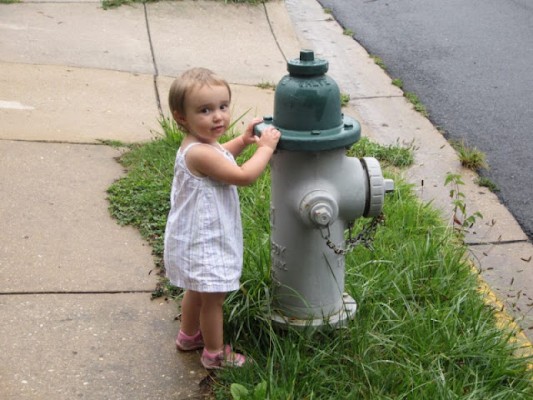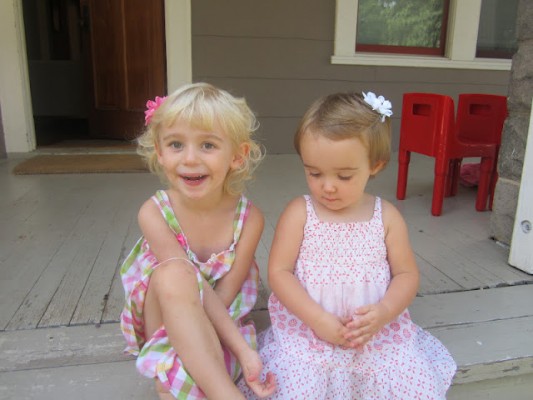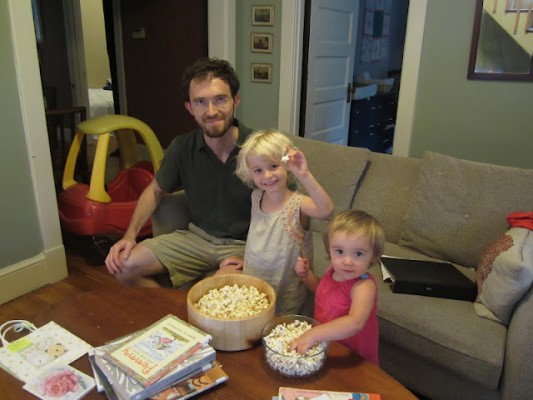There I was, with three daughters, four and under. And boy, was I insecure. I was so unpolished, not to mention I didn’t know how to polish my own shoes.
How was I to raise my three exuberant children to be mature adults, when I felt like I had so many areas where I needed to grow up, too?
I had a mother’s helper- a 12 year old- come to help around the house. She swept, she made the girls nachos, and she painted their fingernails without so much as a complaint. She loaded the dishwasher without being asked, she watched TV with the girls, swept up when needed, and picked up our little messes. Could it be that this 12-year old is more mature than me? I wondered.

What ridiculous, insecure thoughts passed through my head.
But it was true- I needed help. And lots of it.
Just in the nick of time, and also in answer to my prayer, a friend and neighbor had the idea to get a book discussion going. She wanted to read the book The Montessori Method, by Maria Montessori.
The book discussion of The Montessori Method was a splendid gathering. There was a lot of funny, interesting, conversational debate. There were those with years of wisdom present: a long-time homeschooling mother with amazingly gifted children. A Mom cuddling her first baby, a 6-month old. And there were nurses, educators, and those trained in the Montessori catechesis there, too.
As our conversation unfolded, it turned out that this character Maria Montessori was not a simple lady. In fact, she was somewhat of a genius. She was the Valedictorian of her graduating class at the University of Rome. She went on to become a doctor. She became interested in helping the poor of Lorenzo, Italy, and began “children’s houses” to make a safe place to poor children to learn and be loved.

Her methods were quirky and particular, and easily misconstrued. It is no wonder, and no surprise. She was particular about many things, such as the physical objects in a classroom. She was not comfortable with large benches nailed to the floor. Just as shoes should fit a child’s feet, if that child is expected to learn to walk comfortably, a table and chair should be small and lightweight, so that children can learn to sit comfortably, maneuver easily, and become coordinated at a desk.
Her opinions about the child-friendly environment, methods used in her “children’s houses” stood out. She believed it should be centered on beauty and order: not child-proof, but child-inviting.
In a Montessori environment, simplicity reigns.
From just a few weeks of trying to implement these ideas, I see progress with my girls. I have also lived next door, and become good friends with a lady who is trained in the Montessori Catechesis. Watching her interact with her two children has been enlightening.
As I watch my next-door neighbor help her kids water the flowers, I'm reminded that through our patience and faith that over time, and with repetition, they are absorbing the way the world works. They are learning that they take up a big place- obviously!- in our world. They share this world with us- it is not just an adult’s world. If we respect their perspective, and give them the tools to be competent individuals, they are set free to work with us where they are.
She was also particular and blunt about the need to respect all students, give them the right to their independence, and respect their unique intuition and creativity. She said, “The first essential in a Montessori experience is freedom.” If she saw another teacher who did not respect a child, she would speak up. This development of independence, according to Montessori, actually really builds community. No one can fully participate in a community until he is truly free. Freedom requires independent skills and an independent mind. Hence the motto of this method, “From the hand to the mind.”
A homeschooling mother shared a humorous story. After the manner of Montessori, she implemented her idea to let an older child hammer nails into wood. He loved it, and spent hours doing it. She tried it with her daughter, and she did it once and moved on to something else.
One thing that is hugely important in this method is the need for the development of concentration in a child. For example, say a child wants to learn to competently clean their place at the table. This takes someone slowing down all of the steps in the process of clearing, using a sponge, sweeping the crumbs, getting the sponge wet again, and repeating the clean-up until the table is clean. These steps then become habit, as second nature as something like putting on a seatbelt. This slowing down, developing concentration, and transferring of competence is applied to using the potty, sweeping, washing dishes, pouring, and all of the other practical skills of life that children gradually learn as they grow up in a home.

Maria Montessori said, “The child is sent to form the adult.” Truly, as we develop the patience required to give competence to our children, we are becoming more holy. As we train them to become holy, we learn it along side of them. It is a process that deepens our core every day.
What happens when they begin whining? Give them more work and more experience. However, I must keep in mind that continuing the process of the development of the will requires persistence. According to Maria Montessori, when they get bored, they don’t need entertainment, they need (and want!) work! In my experience, this is true.
Children would prefer to learn a new, real skill like using a child-sized wheelbarrow, watering flowers, painting a wooden swing, or washing dishes, to sitting passively in front of an uninspiring, blinking fisher price gadget.
As I started to digest these ideas and discuss them, new hope dawned on me. After the book group, a resounding peace washed over me. I love being a Mom, I thought. Reading this book has given me names for the ideas I had in my intuitive mind. Maria Montessori articulated and brought into reality what exactly kids are needing from adults. It is going to take immense time, and immense patience, but I love this. If I have to bend over backwards, I will find a way to implement her methods. And in the process, the hope I have, and the progress I see in my girls, is already making me a more confident Mom.
After hearing about the nail-hammering, I remembered my older daughter’s love for watercolor painting. I got that out, along with some waterplay for my 22 month old.
In her book, she quotes Sergi:
"Today in the social world, said Sergi, an imperative need makes itself felt- the reconstruction of educational methods; and he who fights for this cause, fights for human regeneration."
Her book, The Montessori Method, and some amazing lectures are available for free online.
Lectures:
1. Overview - the 4 stages of the development of the human person
2. The prepared environment
3. Discipline
4. Catechesis of the Good Shepherd (overview)
You can get the book for free online http://digital.library.upenn.edu/women/montessori/method/method.html and the audio book is free online as well at http://archive.org/details/montessori_method_0906_librivox
 Tacy Beck
Tacy Beck
Though born and raised in the South, Tacy and her husband Stephen are raising three daughters in the D.C. area currently. Tacy has experience teaching English and dance. They are Christ-followers and lovers of community.
Tacy loves to write about topics such as homemaking and education. She was published as a guest-blogger at Finances...Your Way. Visit Tacy at http://pictureaskyline.
Copyright 2012 Tacy Beck
About the Author

Guest
We welcome guest contributors who graciously volunteer their writing for our readers. Please support our guest writers by visiting their sites, purchasing their work, and leaving comments to thank them for sharing their gifts here on CatholicMom.com. To inquire about serving as a guest contributor, contact editor@CatholicMom.com.


.png?width=1806&height=731&name=CatholicMom_hcfm_logo1_pos_871c_2728c%20(002).png)
Comments